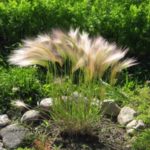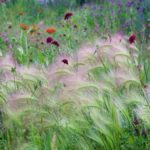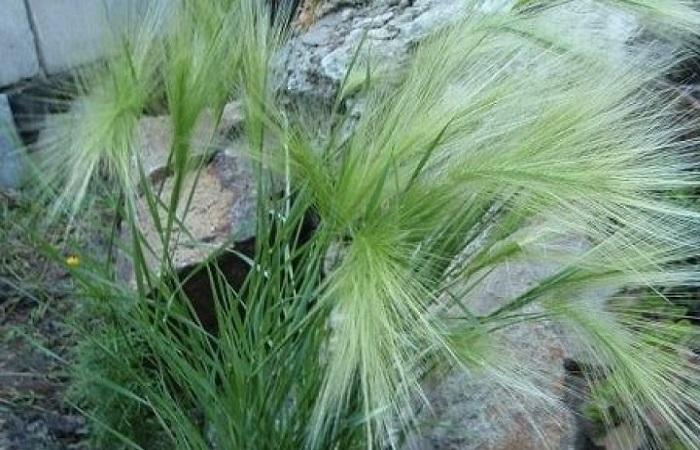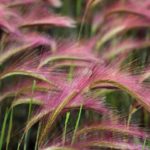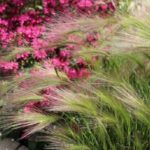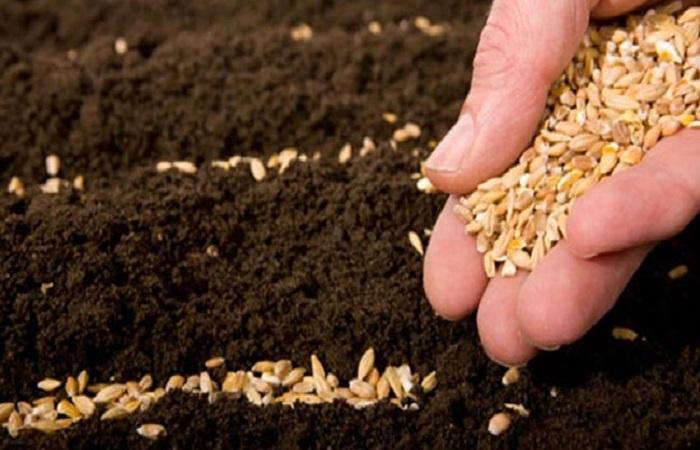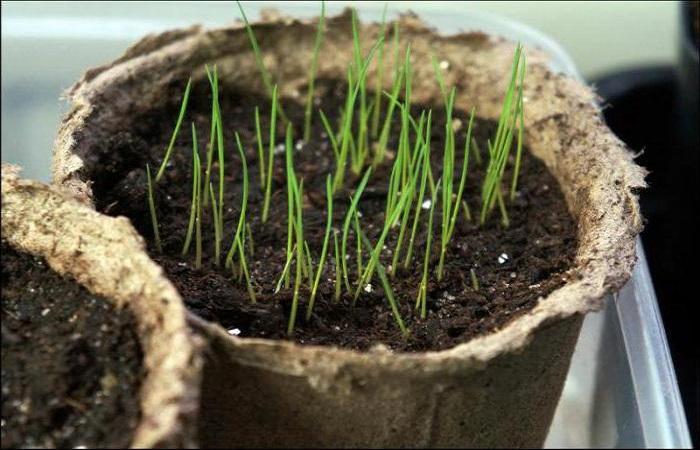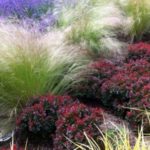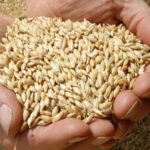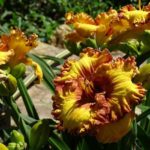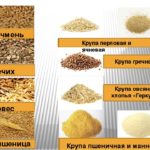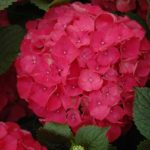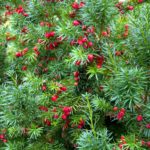Maned barley is becoming increasingly popular among gardeners. It is undemanding to growing conditions and has excellent decorative properties. That is why culture is often used in landscape design. In order for the cereal plant to look aesthetically pleasing and develop well, it is important to take into account the basic recommendations for its cultivation. In this case, it is necessary to carry out planting work correctly and provide the plant with quality care.
- Description and characteristics of the plant
- History of appearance
- Advantages and disadvantages
- Economic purpose and application
- When does it bloom?
- The use of maned barley in landscape design
- Landing rules
- Dates and place for sites
- Preparing seeds and soil
- Growing seedlings and planting in seedlings
- Specifics of care
Description and characteristics of the plant
Under natural conditions, maned barley, or Hordeum Jubatum, grows in the Far East and Eastern Siberia. However, it is quite acceptable to grow it in different climatic zones. The plant is considered very unpretentious. It easily tolerates frost, extreme heat, drought, and excess rainfall.
The plant appeared as a result of idioadaptation. It has not very long leaves measuring 3-8 centimeters. Moreover, their width does not exceed 0.5 centimeters. The roots are short. The height of the stems reaches 50 centimeters.
Spikelets are collected in 3 pieces. Each of them has a large number of fluffy hair-like spines, the length of which is 7.5 centimeters. Thanks to this, the plant resembles a fluffy caterpillar, an elongated dandelion or a horse's mane.
The culture blooms from July to September. That’s why designers combine it with other ornamental plants, forming spectacular compositions. In addition, you can create beautiful dry bouquets from spikelets.
History of appearance
In nature, the culture is found in the steppe regions of northeast Asia. It can also be seen in the grasslands of North America. The cereal received its scientific name in 1954. It was given to the plant by Carl Linnaeus.
With the advent of new railway tracks, the plant became widespread. Maned barley spread throughout Russia in the second half of the twentieth century. Today the culture grows along the railways of the Volga-Don region and Eastern Siberia.
Advantages and disadvantages
The benefits of the plant include the following:
- decorative appearance;
- undemanding to growing conditions;
- strong immunity.
At the same time, culture also has some disadvantages:
- toxicity to animals;
- rapid spread throughout the area.
Economic purpose and application
Maned barley has exclusively decorative properties. It is used for landscaping parks, squares, and gardens. The culture is also perfect for creating floral arrangements, performing the functions of dried flowers.
When does it bloom?
Barley begins to flower in July. At this time, spike-shaped inflorescences appear on the bushes, which bend slightly in the stem. Young spikelets are silver-green in color. Over time they become straw yellow.
Barley flowering lasts 2 months. At the same time, seeds appear on the bushes in September. When dry, the plant retains its decorative properties until frost.
The use of maned barley in landscape design
Maned barley is often used to decorate flower beds and flower beds. This barley looks especially beautiful in rocky gardens and rock gardens. It can also be planted on lawns, combined with other plants. This barley can be used to fill voids between crops that quickly bloom in the spring.
The following are suitable partners for the plant:
- other ornamental cereals - in particular, switchgrass;
- light-loving annual plants - for example, openwork bentgrass, pennisetum;
- perennials with silver foliage - lavender, sage;
- bright plants - marigolds, calendula.
In addition, the plant can be used for turfing beds. It also looks good cut. Using barley, you can make bouquets and various decorative compositions from dried flowers. To do this, it is recommended to prepare the cereal in advance - collect it in early June and dry it in bunches. If you do this later, the ears may fall off.
Landing rules
The plant is considered very resistant to various temperature fluctuations. It can easily withstand frost. The crop is also considered very undemanding when it comes to watering. Drought does not cause much damage to cereals. However, there are a number of rules that must be followed.
Dates and place for sites
It is best to plant barley seeds in consistent warm weather. However, you should not do this in the heat. Of course, planting times vary depending on the region. Barley begins to be grown in open ground in the Moscow region later than in the south. However, on average, planting dates are in April or the end of August. In the first case, it will be possible to obtain an ornamental plant in July, in the second - in June of next year.
The place for growing the plant must meet the following requirements:
- Plenty of sunshine. The plant is considered light-loving. It also grows well in the shade, but may lose its decorative effect.
- Moderate humidity. Excessive amounts of moisture negatively affect the development of maned barley. Therefore, it is not worth planting the plant in lowlands.
- Light soil structure. Soil that is too heavy does not allow air to pass through easily and retains moisture well. This can lead to the death of the culture.Therefore, planting it in heavy and dense soil is not recommended. If there are no alternatives, barley can also be grown in sand. The best options are alkaline and slightly acidic soil.
Preparing seeds and soil
To achieve fast and uniform germination, it is necessary to stratify the seeds. To do this, it is recommended to do the following:
- Pour some peat into the bottom of a small container.
- Place the seeds on top.
- Lightly moisten the soil.
- Wrap it in film and make several holes in it with a needle. Thanks to this, it will be possible to ensure air flow to the planting material.
- Place the seeds in the vegetable compartment of the refrigerator for 2 months. After the specified time, maned barley can be planted.
The only option for propagating the crop is the seed method. If you plan to replant later, it is recommended to prepare the seeds in advance. To grow seedlings, it is recommended to plan planting work for the first half of September. In winter, the sprouts should be placed in a warm place.
To prepare the soil for planting maned barley, it is recommended to do the following:
- carefully dig up the beds;
- remove all weeds;
- add compost and organic fertilizers that contain a lot of potassium and phosphorus.
Growing seedlings and planting in seedlings
The seedling method is used if you want to achieve earlier flowering of barley. Thanks to this, the process will begin 1 month earlier. It is recommended to plant seeds in mid-March. To do this, it is recommended to do the following:
- Fill the seedling containers with a special substrate. To do this, it is recommended to mix humus, peat and sand in a ratio of 2:1:1.
- Place the seeds on the surface of the soil, press them slightly into the soil and sprinkle with peat.
- Moisten the soil with a sprayer.
- Water the beds as the top layer of soil dries.
- When the fourth true leaf appears on the seedlings, move them to separate containers.
- Keep the plants on a warm windowsill until May 10. Then the bushes can be moved into open ground. When planting in a permanent place, it is important to avoid damaging the fragile roots.
In order for seeds to germinate well, they need to be provided with suitable conditions:
- the temperature should be +14-16 degrees;
- air humidity should be maintained at 65%;
- lighting should be diffused.
To plant seedlings and achieve earlier flowering, barley can be planted in a greenhouse in March. In this case, the bushes will quickly begin to grow. As a result, flowering will begin in April.
Specifics of care
In order for a plant to grow and develop normally, it requires proper care. Timely soil moisture is of great importance. At the same time, it is important to remember a sense of proportion. The soil should not dry out, however, stagnation of moisture should be avoided.
In order for the plant to maintain its decorative properties, it needs to be fed regularly. In this case, it is recommended to use fertilizers no more than once during the season. Before fertilizing, the soil must be well weeded.
To prevent maned barley from covering the entire area, it is recommended to periodically thin out the beds. In this case, you must first collect the seeds.
The plant has strong immunity. However, sometimes it is affected by gray rot. Infected plants must be separated from healthy ones. In this case, infected fragments must be removed. Fungicides are used to treat pathologies.The most effective drugs include “Chorus”, “Topaz”, “Fundazol”.
Maned barley is a popular plant that has excellent decorative properties. In order for a culture to grow and develop normally, it needs to be provided with complete and high-quality care.

